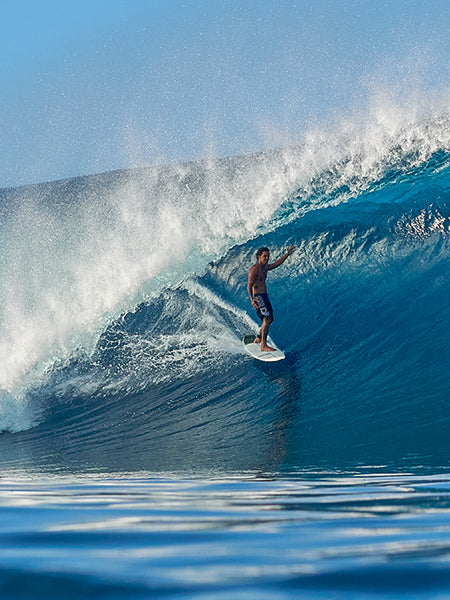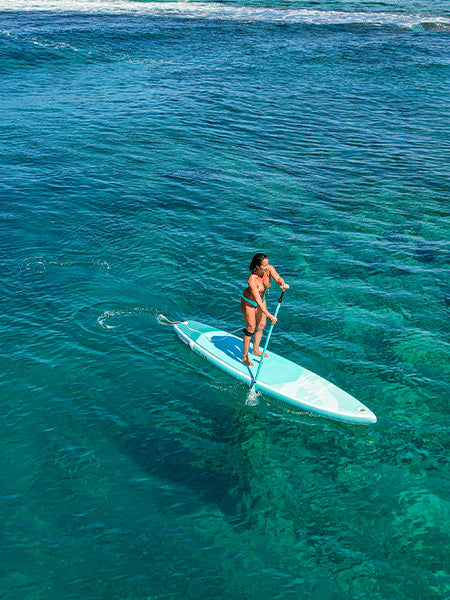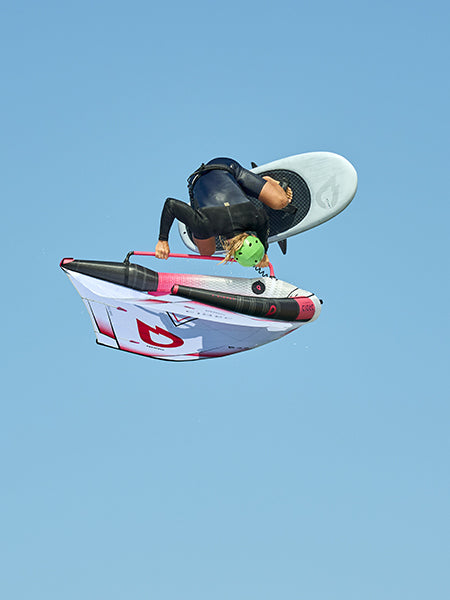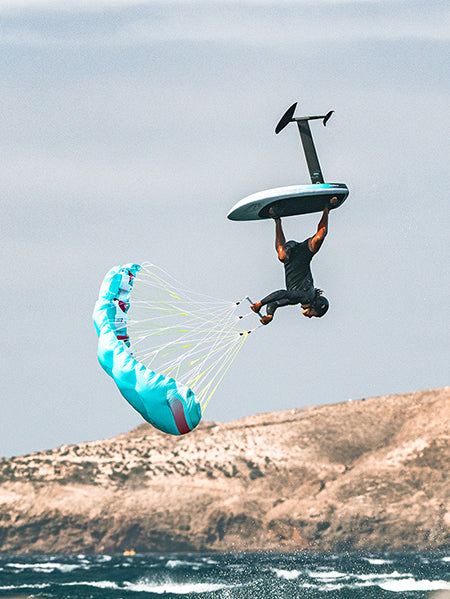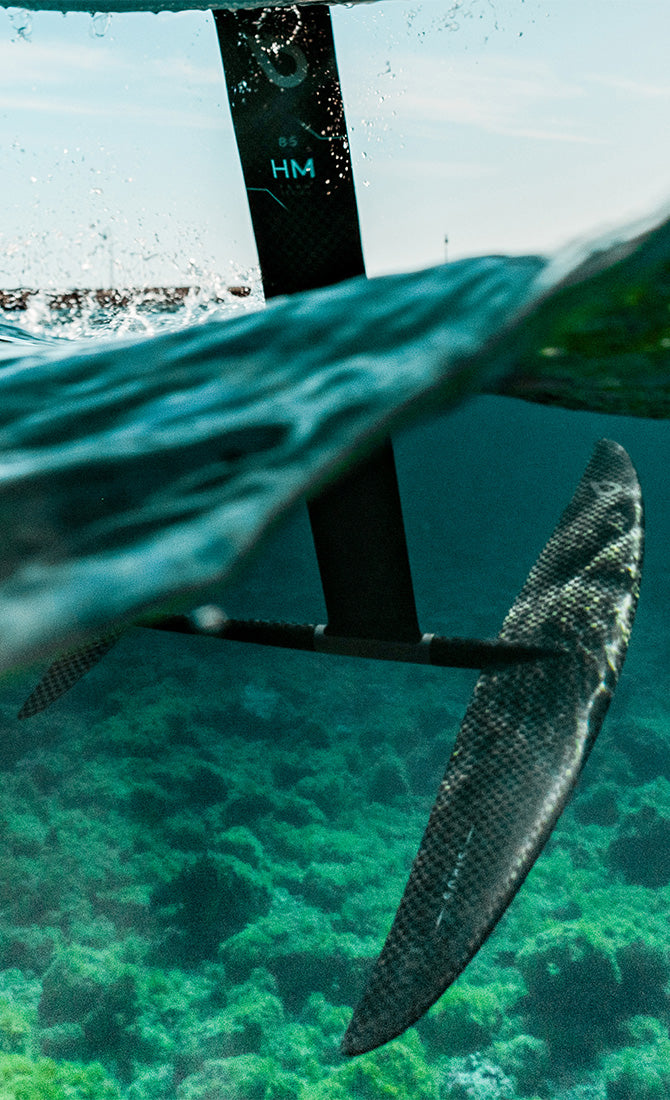Jump in the harness
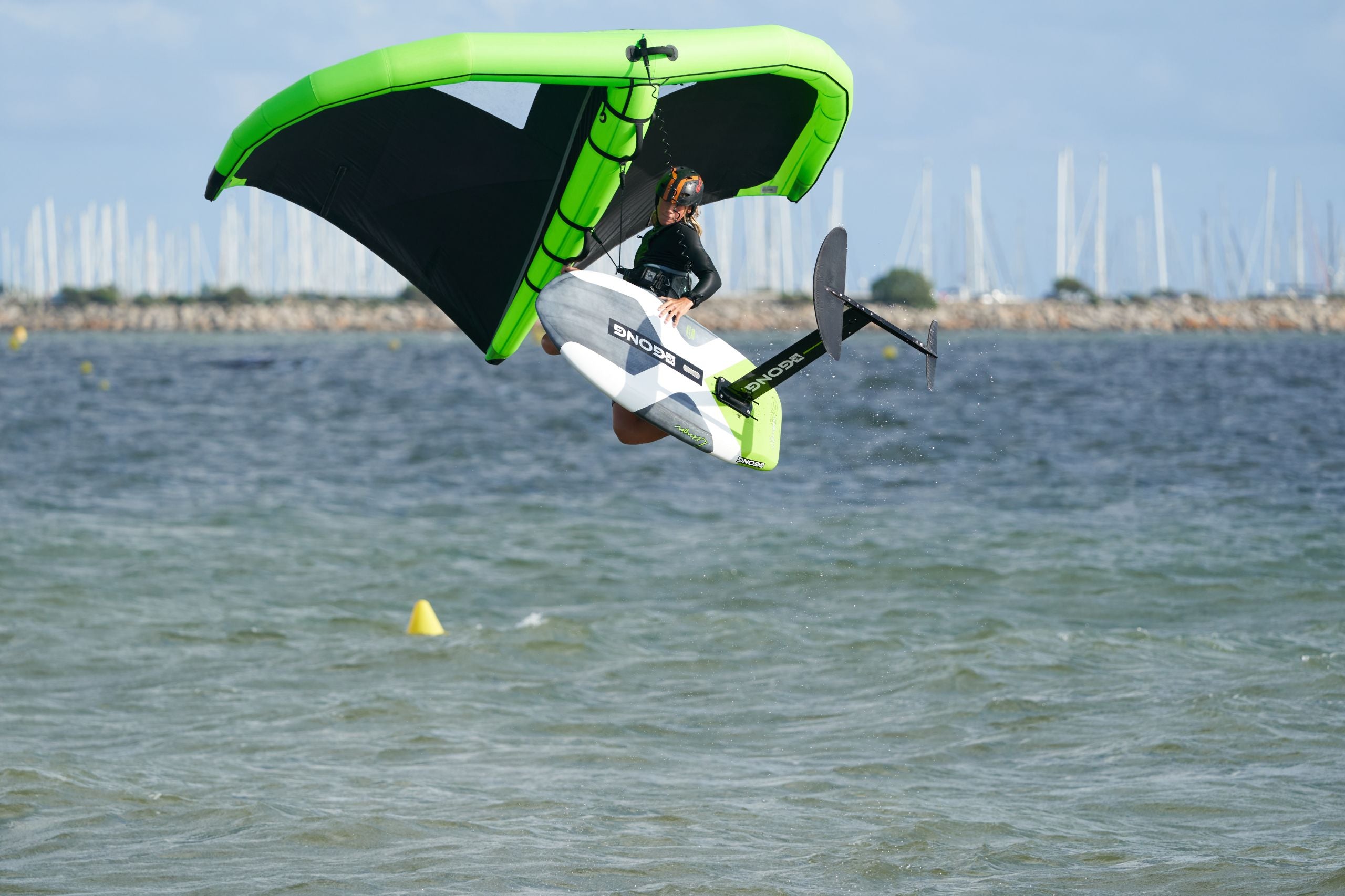
Hooked in jumps can be fun to do if you are used to riding with a harness. In addition, these jumps can allow you to do other tricks. Let’s see how in this How To.
First of all, you must have a harness (makes sense) and a very solid harness line. Indeed, if the harness line is poorly attached or you made it with a material that is not very strong, it will surely break. You’re suspending all of your weight at this line, so make sure it’s done right (see How To). Check the length of the harness line carefully, if it is too long you will not have any power in your wing and you will not be able to jump. It needs to be short enough that you are constantly sheeted in. Now that you are well equipped, you will be able to jump.
Engage the jump
To do this, start by gaining speed like a normal jump. Therefore hook yourself to the harness line and sheet in to gain power. As you pick up speed, get into your rear strap to keep the board under your feet in the air. Once you are in position to jump, choose a section on which to send your jump. This section can be a wave, a bump, a big chop or just a gust. As soon as you have arrived on the section, give an impulse. You will therefore push on your foil to lower it slightly and then lighten up by relaxing your legs to let it come out of the water.
Be careful to stay straight during the pop. If you throw your body around like you’re doing a railey, there’s a good chance you’ll take a monumental beating (we’ll see why later). Also, try to do your jump sailing upwind or crosswind. If you jump too much in the beam reach point of sail, you won’t get high at all and you won’t have much power in the wing.
On the other hand, if you jump too much into the wind, you will lose all your speed in the air and fall backwards. At the same time as you give your impulse, you can do the same with your wing. That is to say, lower it slightly and then rise again to help you jump. Be careful, if you lower it too much, the low tip of the wing will catch the water and either you will lose all your speed or you will fall forward because you got carried away by the wing. Also, when jumping try to put the wing slightly in the umbrella position but pulling on your back hand. Putting it in this position will give you a high jump, not a long jump, so the landing will be smoother.
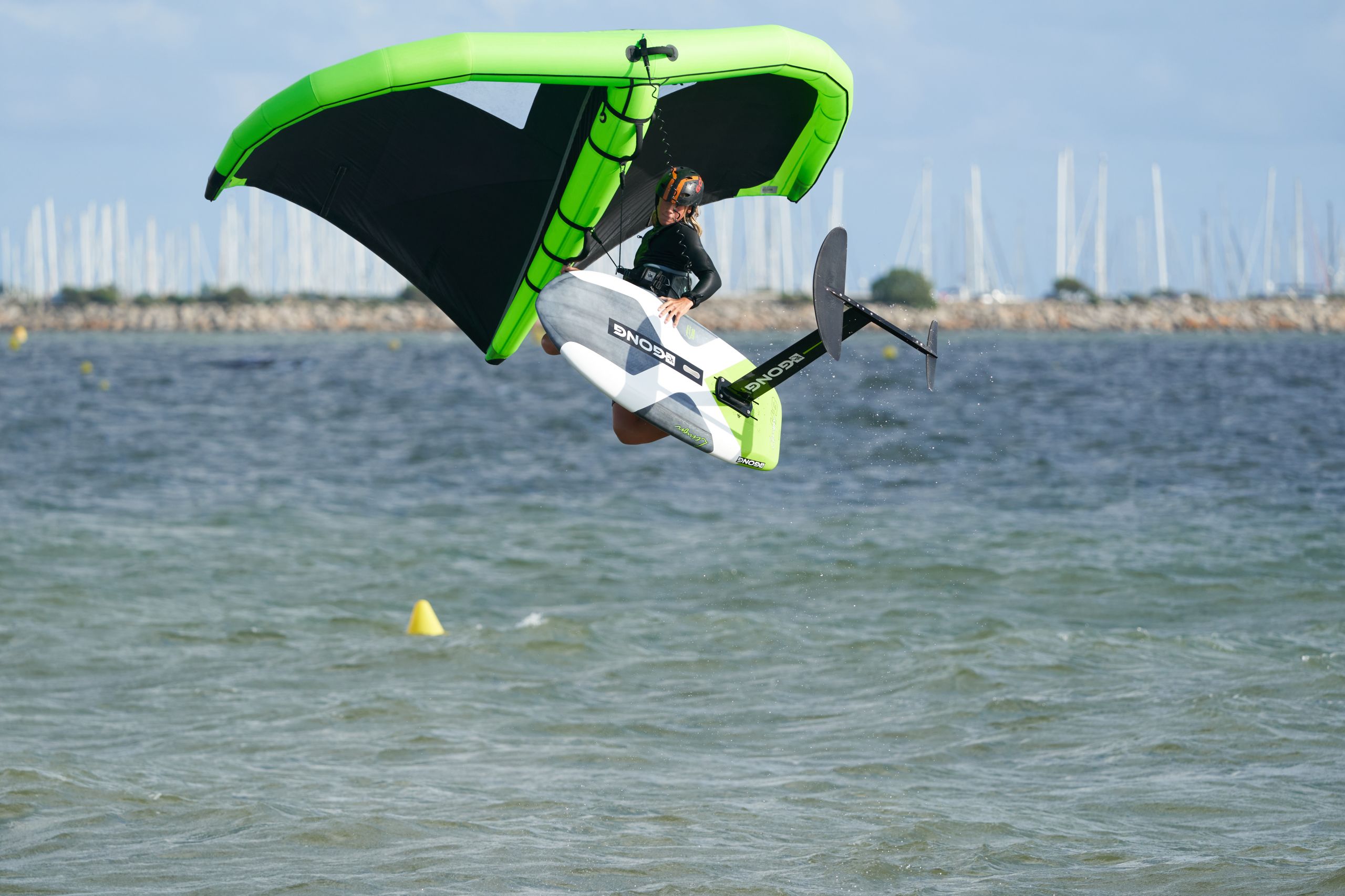
The wing
If you’ve followed all of these steps correctly, you should be in the air. There, you will have to make sure to keep the wing in the position in which you gave the impulse throughout the jump. You should know that when you jump with the harness, the wing is much less mobile than without the harness. So the slightest mistake cannot be recovered from. If you send it too far forward, you will go into a front loop and you will have a monumental crash in the wing. Conversely, if you put it too much behind you, you will get carried away and fall on your back. The same if you are not straight, you will not be able to lean on the wing to stand up. So try to keep the wing and your body as stable as possible.
Cushioning
Now that you’ve gone up, you will inevitably go down. For the descent you just have to stay in the same position as during the entire jump. Upon landing, you will prepare for cushioning by tilting the board so that the nose enters the water first (nosedive). Landing in a nosedive will make the landing smoother and prevent damage to your gear. By now you are supposed to have landed very smoothly. There, you will only have to remove yourself from the harness to be able to pump with the wing and leave.
That’s it, you now know how to jump with the harness, you just have to get in the water to practice. Once you have mastered single harness jumping, all you have to do is look at the other How To’s to learn more hooked in tricks.Malo Guénolé
